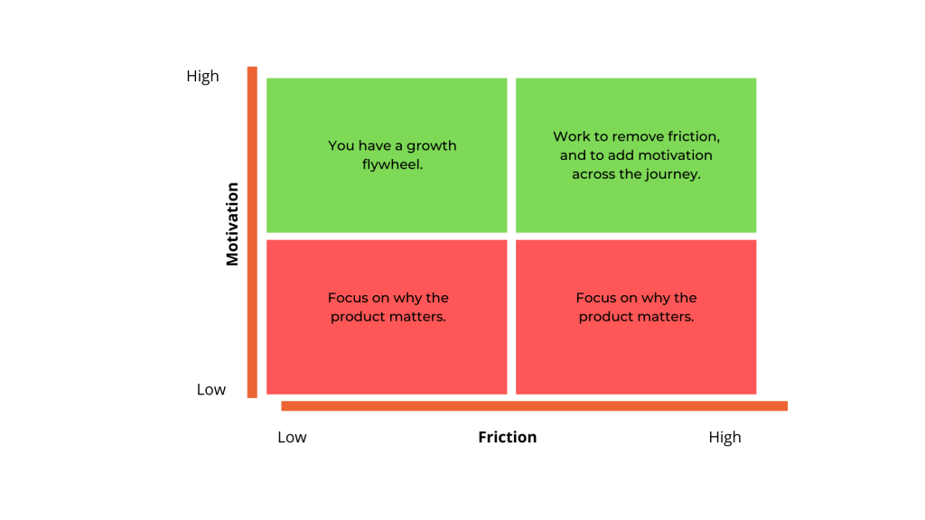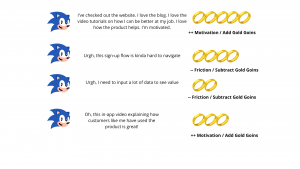In this episode of the GrowthTLDR, we're back with another Swipefile, where we talk about adding motivation and removing friction.
Most of the goals marketing and growth teams have can be categorized as either adding motivation or removing friction.
We talk about some common ways marketers add motivation, some great examples of how companies remove friction, and why product-led companies need to approach them differently.
Happy Growing!
Time Stamped Notes:
A lot of marketing and growth team efforts are categorized into two buckets:
- Adding Motivation: How do I add motivation to my users so they'll take the next step in the customer journey.
- Removing Friction: How do I make it easier for them to take that step.
Here is a 2*2 that describes those choices:

If your audience's motivation is low, you need to focus on doing things that will pump it up.
If motivation is high, and friction is low, you've got a growth flywheel.
If motivation is high and friction is high, it's a constant balance in ensuring the user has enough motivation to overcome friction points.
Think of it like a game of Sonic the hedgehog:

You're collecting gold coins along your journey (motivation) or losing them (friction).
What do we mean by adding motivation?
Marketing's near entire existence is to add motivation for someone to care about their companies product or service.
We talked about this with Andy Raskin on episode 125 of the GrowthTLDR, how can companies create a strong company narrative.
Most narratives for B2B are one of two options:
1. Solving a known problem in a better way: these companies add motivation by focusing on how their product has superior features than the competition. Their marketing is very product-centric. They're tackling an existing problem, but solving it more efficiently.
These companies are competing in existing categories.
Examples are:
- Loom: providing better communication via asynchronous video
- Gong: providing better sales intelligence via their data platform
2. Transforming the way you do something: these companies add motivation by transforming how you do something, moving from an old broken way to a new, better way.
These companies create new categories.
Examples are:
- Lamba School: Lamba School is transforming the way you think about education. You don't need to pay for tuition until you get a job, and the school then takes a % of your salary.
Most B2B SaaS brands are focused on better features. As Daniel Scrivner, CEO of Flow, said in episode 144, those companies need to pick a couple of features and do them better than the competition.
Marketing increase motivation by telling this narrative through their website, blog, customer case studies, online events.
Note: What's interesting is how adding motivation changes in a product-led world. More on that in an upcoming episode with Pulkit Agrawal, CEO, and Co-Founder of Chameleon
Friction is the art of making the customer journey less complicated for your users. Evan Williams, the founder of Twitter, said the key to making millions online is to remove extra steps from common activities.
It also summarizes the goal of removing friction from your customer journey.
We cover some great examples of experiments to remove friction from world-class tech brands in the podcast. Make sure you tune in to hear them.
Articles mentioned in this episode include:
 iTunes
iTunes Stitcher
Stitcher Spotify
Spotify